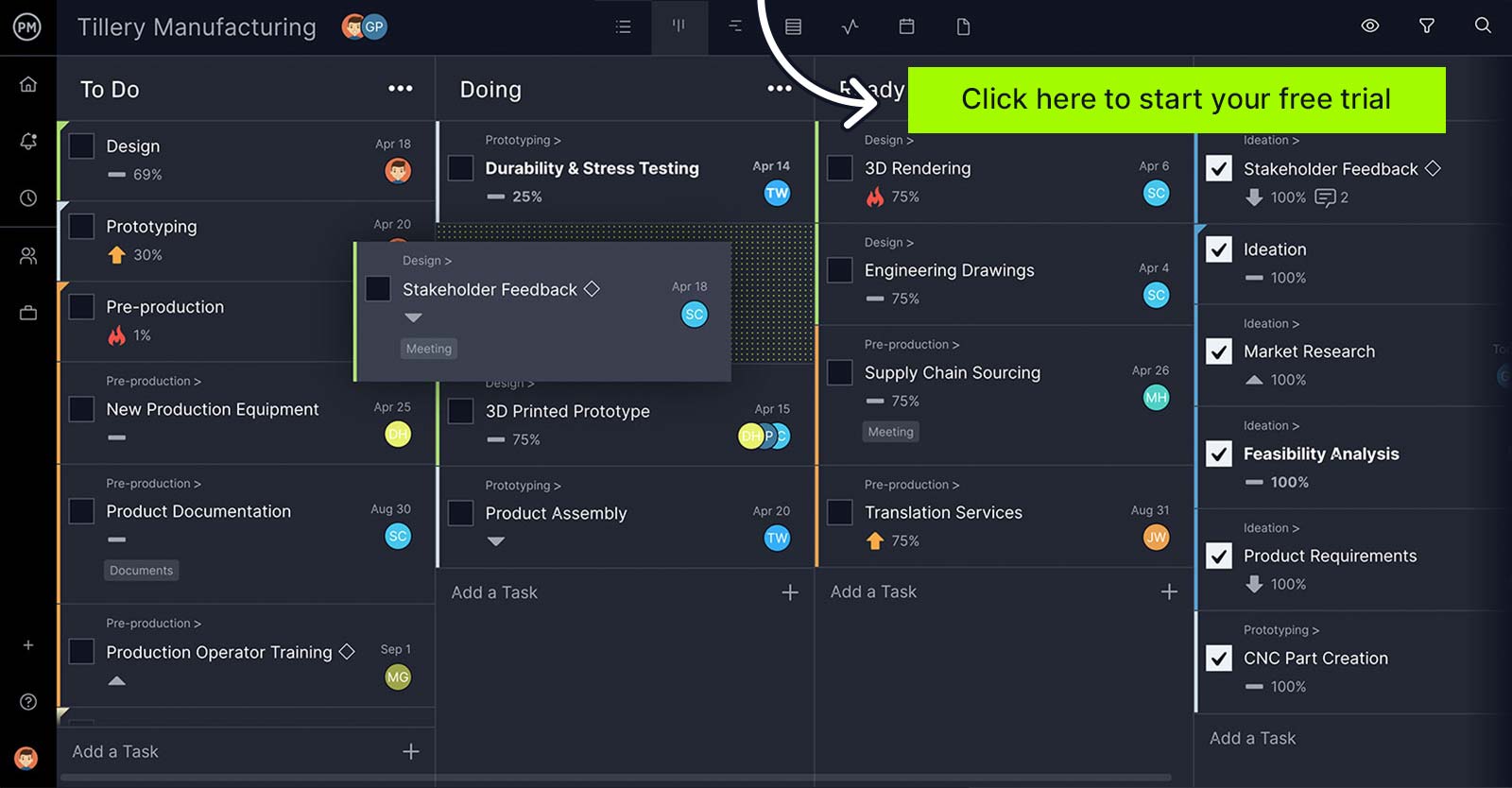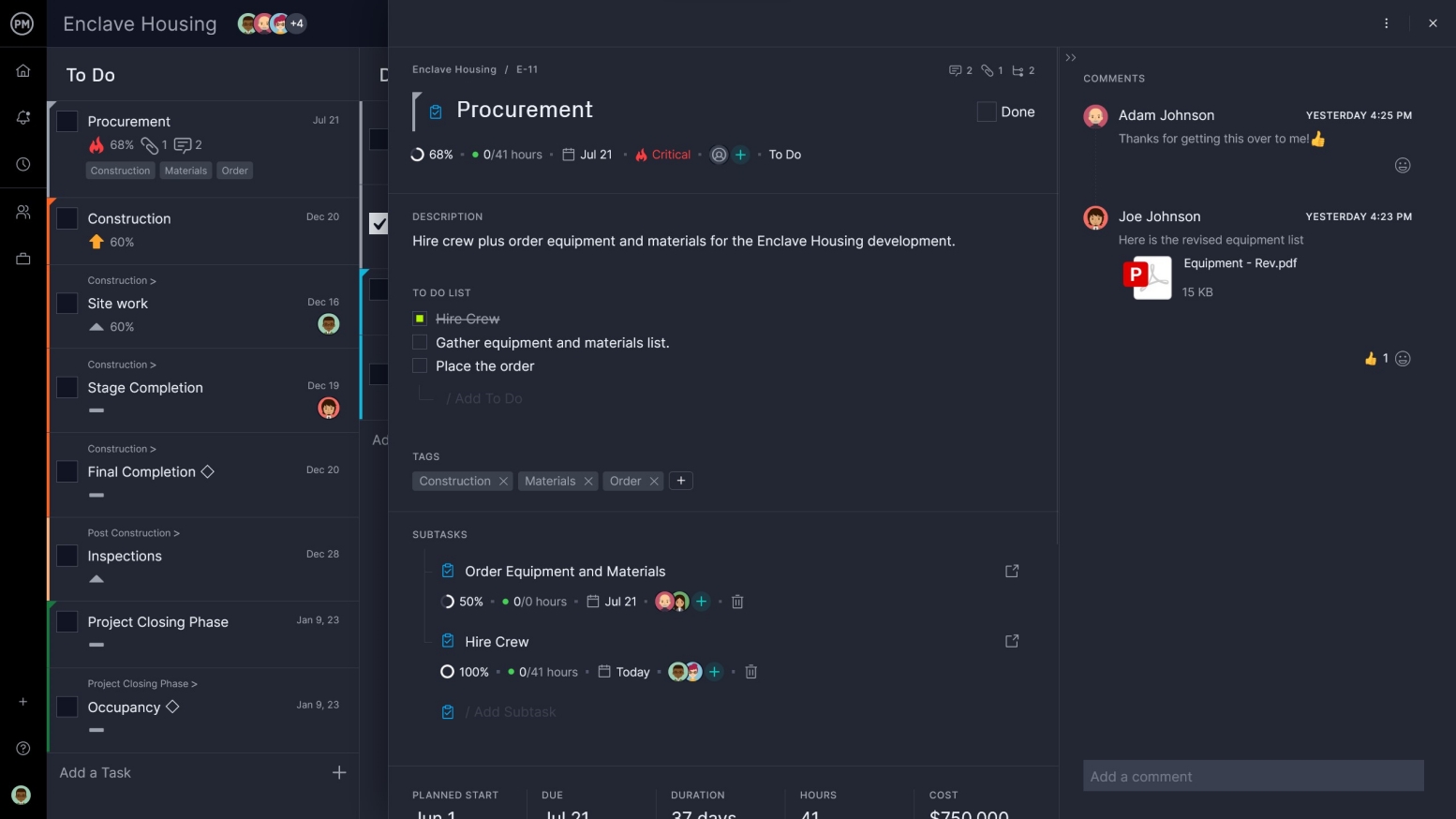Information technology (IT) is a broad field that encompasses anything related to computer technology. That can include networking, hardware, software, the internet and the people that work with these things. Teams that work in IT are there to support these technologies and the people who use them. However, teams that work in IT management are not waiting around for systems to go down before they respond.
IT project management teams are tasked with preventing problems from occurring—and certainly from regularly occurring. This is called problem management, which has been detailed into best practices within the services management framework ITIL, or the information technology infrastructure library.
What Is Problem Management?
Problem management is the methodology related to responding to IT problems, especially those that are recurring, to make sure that they are resolved and don’t return.

This involves the quick detection of an issue and then providing a viable solution, or at least some workaround to reduce the impact on the organization and stop the problem from reappearing.
ITIL & Problem Management
One of the aspects of problem management is pinpointing the issue in the IT infrastructure that is the root cause of the problem, which is where the ITIL comes in. ITIL was first started in 2000 and is presently the most popular IT service management framework for best practices. It is used as a protocol when aligning IT services with business needs.
ITIL follows a process that starts with identifying the problem, which has caused one or more incidents but is not known why at the time. This becomes defined as an error when it’s identified as a design flaw or malfunction. It becomes a known error as a root cause if found and a workaround is documented. The root cause is the underlying reason for the incident.
Types of Problem Management & Related Processes
Problem management can be broken down into two distinct groups. There is reactive problem management, which is reacting to a problem when it occurs. The other is proactive problem management. This is the act of identifying and solving an issue before it results in an incident or problem in the IT system.
Problem management falls under the larger umbrella of ITIL processes. ITIL service operation processes include problem management, incident management, request fulfillment, event management and access management.
Incident Management vs. Problem Management
“Incident” and “problem” might seem like similar words, but in the realm of problem management, they have different meanings. According to ITIL, an incident refers to “an unplanned interruption to a service, or the failure of a component of a service that hasn’t yet impacted service.”
A problem, on the other hand, is made up of more than one related incident, or those that have common issues. Therefore, a problem is more severe than an incident. It requires more follow-up. A problem is not an incident, but an incident can create a problem if it’s recurring.
Managing an incident means fixing it and restoring the system as fast as possible. A problem is resolved by discovering its root cause to make sure that new incidents don’t occur.
Therefore, incident management is getting the system back in order quickly. Problem management is working to find and resolve the underlying cause of the error that has resulted in several incidents.
Problem Management Team
There are roles and responsibilities in problem management to make sure that the process, which is outlined below, is carried out properly. There is a problem manager, who is the owner of the problem management process and is a liaison for all team members, manages the known error database, closes problems and coordinates review.
The problem-solving team can be an internal technical support team or a group of external suppliers or vendors. Sometimes, if the problem demands special attention, the problem manager will assemble a special team, with the expertise needed to solve the problem, dedicated to that specific problem and its resolution.
The Problem Management Process
Now that we know what problem management is, how does it work as a successful process? First of all, it’s not just about problem-solving. At the highest level, yes, problem management resolves problems. But it’s more about the entire life cycle of that problem.
The process for problem management then is a structured way to manage problems in IT projects after they are first reported by users or service desk technicians. The problem management process can be broken down into these seven steps.
1. Detection
To resolve a problem, first, you have to identify it. This can be done in several ways. One is that there’s a problem that is reported or one that has undergone an ongoing analysis. There are also event management tools that can automatically detect a problem, or you might get a notification from a supplier.
A problem can be defined as when the cause of the problem report remains uncertain. For example, an incident can occur and get resolved but then reoccur. The underlying cause for this recurrence is unclear. Sometimes a problem is a known problem, one that has occurred before and is part of an existing record.
2. Logging
In the last example, when a problem is already recorded once and has happened again, this historical data is known because it had been logged. This is a crucial step in any problem management life cycle process. The log must have all pertinent details, such as the date and time of the problem, any user information, equipment details and a description.
Once the problem has been logged, then it must be categorized to better assign and monitor, as well as given a priority. This helps to determine how important the problem is and when it should be addressed by the team.
3. Diagnosis
Once the problem is identified and logged, then comes the search for its root cause. This can be done by investigating the known error database to find other problems that match the one you’re trying to diagnose and see if there are any recorded resolutions.
4. Workaround
If it’s possible to temporarily fix the problem with a workaround, then this might be the best and fastest course of action. It is not a permanent change and should not be used in exchange for resolving the issue, but it can set the technological ship back on course and reduce downtime and disruption until a permanent change resolution is available. Just be careful not to accrue too much technical debt.
5. Known Error Record
After you’ve identified, logged and diagnosed the problem, it’s important to collect that information in a known error record. This is where you can go back and look up problems when others arise in your IT and see if it’s one you’ve already handled.
This makes resolving the problems faster and easier, resulting in less downtime and disruption.
6. Resolution
When you have a resolution for the problem, implement it with standard change procedure and test the resolution to make sure it in fact is working. Sometimes this process is carried out through a request for change document, which then must be approved before being implemented.
7. Closure
Once resolved and tested, the problem can be closed. The final bit of paperwork is usually completed by the service desk technician, who makes sure that the details are accurate for future reference.
Why Is Problem Management Important?
Successful problem management results in less downtime and fewer disruptions in the business. It also improves service availability and quality. Problem management helps companies to reduce the time they spend having to resolve problems and also the number of problems that occur.
This all leads to an increase in productivity and reduces costs. The final step in the problem management journey is that it leads to improved customer satisfaction.
Technology is changing all the time, faster and faster with each passing quarter, and problem management is one way to mitigate the chaos often associated with these changes. Problem management keeps services running and increases quality.
ProjectManager Helps Problem Management
Problems need solutions and solutions come from people with the right tools. ProjectManager is an online project management software that organizes projects, including when those projects are dealing with IT problems.
Log Problems & Build Projects
When a problem has been identified by the help desk or a user, it becomes more than just an IT problem. It is now a project to resolve it. One way ProjectManager helps is by structuring its resolution in a kanban board.
By logging the identified problem in ProjectManager you can now archive the work to resolve it. This now becomes a piece of historical data to reference if and when the problem shows up again. Once the problem has been diagnosed, it can go on a kanban card and move through the kanban as it is being worked on and completed. Adding tabs can list them as bugs, so they’re easy to find. You can even prioritize them.

Track Progress
Managers are going to want to progress reports. Kanban boards are transparent, so they can see the work getting done, but for more details project reports are fast and thorough. The real-time dashboard can even give managers a high-level overview.

Next time your IT department is struggling with resolving a problem, give them ProjectManager. It has the tools IT professionals want.
ProjectManager is a cloud-based project management software that can be used as a problem management tool. Our software can collect and categorize your problem as a project, so the problem management process can be controlled. You can track the resolution of your problem in real time, assign team members to resolve the problem and give them a platform to collaborate and work more effectively. Solve your problems by trying ProjectManager free with this 30-day trial offer.


